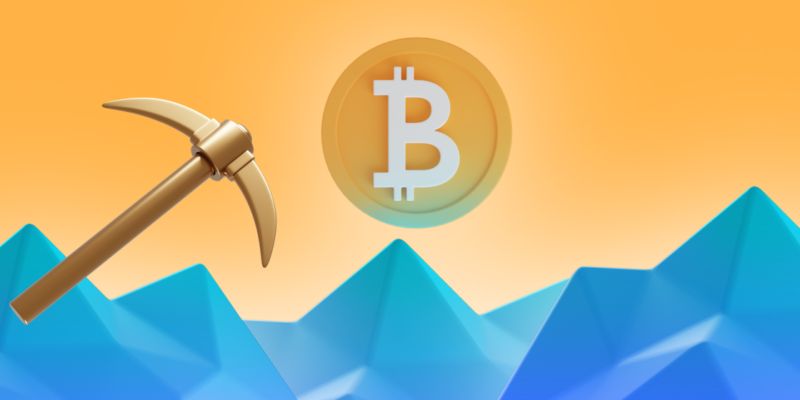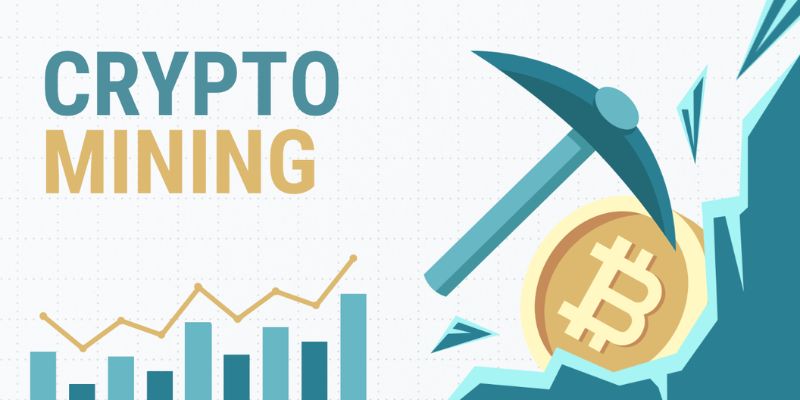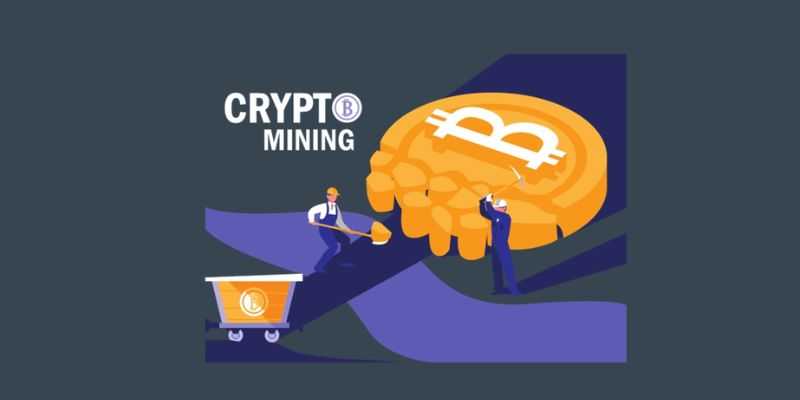How to start crypto mining might seem like a maze, but it’s your ticket to the digital gold rush! Now, imagine turning your computer into a treasure box, brimming with the potential of cryptocurrency. But how do you unlock this chest of digital wealth? Forget the complex jargon; I’ll guide you through the basics, help you build your first rig, and turn up the dial on your mining operations. Sit tight as we dig into the nitty-gritty of turning bytes into bucks and keep your virtual coins safe and sound. Strap in, future miner, the journey to your crypto fortune starts here!
Understanding the Basics of Crypto Mining
Deciphering Blockchain and Proof of Work
Let’s start with the heart of crypto mining: the blockchain. Think of it like a digital ledger. Every crypto coin has its own ledger. This ledger records all transactions made with that coin. It’s public, so anyone can see it, but no one can change it once it’s set. This is where miners come in. Miners use their computers to add new transactions to the ledger. They group transactions into blocks. Each block connects to the last one. This chain of blocks is the blockchain.
Now, “proof of work” is key to blockchain. It’s a puzzle. Miners solve it to add a block to the chain. Solving the puzzle takes a lot of computer power. It’s hard to do, but easy for others to check the work. When miners solve the puzzle, they get new coins as a prize. This process is mining.
The Different Methods: Solo and Pool Mining
When it’s time to choose your mining path, you have two main options: solo or pool mining. As a lone miner, you would try to solve puzzles on your own. It’s tough, but if you win, you get all the new coins to yourself. Pools are teams of miners who work together. They share their power to solve puzzles faster. When they win, they split the prize.
Solo mining is like going on a treasure hunt alone. You might find a big chest of gold. Or, you might find nothing. Pool mining is like joining a treasure-hunting crew. If the crew finds gold, you get a share. So, while you might get less at once, you may find gold more often.
In either case, start out ready to learn and adapt. Remember, every miner was once a beginner.
Setting Up Your First Mining Rig
Selecting the Right Hardware: GPU vs. ASIC
Ready to start your mining quest? It’s like a modern-day gold rush! But instead of a pickaxe, you need the right tool—mining hardware. “What’s better, GPU or ASIC?” you might ask. GPU wins for beginners. It’s more flexible and cheaper than ASIC.
GPUs, or Graphics Processing Units, are the heart of a gaming computer. But they’re also great for mining digital currencies. They can mine different coins and don’t use a lot of power. ASIC, or Application-Specific Integrated Circuit, is a pro’s tool. It mines fast but it’s made just for one kind of coin and can cost a lot.
Now, if you choose a GPU, pick ones that are tough and get good hash rates. The hash rate is how fast it solves blocks in the blockchain. Good speed means more chance to get coins. Look for reliable, well-known GPUs. They last longer and are easier to sell when you upgrade.
Assembling and Configuring Your Mining Equipment
Got your GPUs? Awesome. Now, you build your mining rig. That’s your computer for mining. Start with a strong frame to hold all parts—like your GPUs, a motherboard, RAM, and power supply.
Putting it together is like building with blocks. Match each part where it fits. Connect them with care; this is your money-making machine. Power it up, and you have to set it up to mine. Choose a mining operating system that’s straightforward. Windows is common and easy, but Linux is also cool if you’re a bit tech-savvy.
Next up, mining software. This is what talks to the blockchain network. Go for one that supports the coin you want and matches your hardware.
And don’t forget a cooling system. Mining gets hot, and heat is bad for your rig. Fans or even special cooling tech can keep it safe.
Now you’re almost there—but where do you send your work? To a mining pool. This is a bunch of miners working together. When they win, they share the coins. “Which pool do I choose?” Pick one that is stable and has a low fee. And make sure it pays out in a way that’s good for you.
Your rig is ready, and you’ve joined a pool. You’re all set to start mining and earning. Remember, this is not just fun; it’s an adventure in tech and money!
The world of crypto mining for beginners is wild but thrilling. Stay patient and keep learning. This beginner’s guide to mining is just your first step. Keep your mind open and don’t give up. The digital gold is waiting for you!
Optimizing Your Mining Operations
Maximizing Hash Rate and Managing Energy Consumption
What is a hash rate? It is the speed at which your rig cracks crypto puzzles. A higher hash rate means you can solve these puzzles faster. This leads to more chances of earning digital currency. So, pump up this rate to boost your mining power.
But there’s a catch. As your rig works harder, it eats more power. That spikes your bills and can eat into profits. So, it’s a balancing act. You must tweak your setup to find that sweet spot. That’s where you mine a heap without burning a hole in your pocket.
Use energy-efficient parts. It sounds simple, but it helps. Opt for gear that gives you the best bang for your buck. Also, make sure your electrical setup is top-notch. The wrong wiring can be a fire hazard or cause blackouts.
Cooling systems are key, too. They keep your rig from overheating, which can slow it down. Fans and air conditioning can do the job. Now, you might be thinking, “Air conditioning? Really?” Yes, it can help in hot places. It stops your system from frying like an egg on a hot sidewalk.
Choosing and Setting Up the Right Mining Software
Once you have your hardware set, it’s all about the mining software. This is what talks to the blockchain and gets you in the mining game. There are heaps to pick from. Some are easy for newbies, while others are for the tech wizards.
A beginner’s tip: look for something with a simple setup. You want to jump into mining without scratching your head at every step. Check online for mining software choices. People share their favorites and how to get started.
When you choose, consider the coins you want to dig up. Bitcoin? Ethereum? They might need different programs. Also, think about what system you’ll use. Maybe you’re a Windows person, or maybe you like Linux. Your software has to work well with your system.
Now, you might wonder, “How do I mine Bitcoin or Ethereum?” You start by downloading your chosen software. Then you tweak it to match your hardware. It’s like a puzzle, making sure each piece fits just right.
Joining a mining pool is smart, too. It’s like teaming up with others to find gold. You all dig together, and then you split what you find. But pick your pool carefully. Some have higher fees, and others might not be reliable.
Let’s wrap it with a pro tip: stay loyal to one pool. Pool hopping, or jumping from one to another, can mess with your earnings. And trust me, in the crypto mining world, loyalty can pay off!
There you have it. You’re set with the basics to make your mining rig the powerhouse it should be. Remember, keep that hash rate high but your energy costs low. Choose the right software to work like a pro. Happy mining, folks!
Profiting from Your Mining Venture
Calculating Your Earnings and Assessing Profitability
Making money from mining digital coins is why we all start, right? First, know how much you could earn. We do this by calculating expected earnings. The math may seem tricky, but it’s not too hard. To figure it out, you need some key info: the hash rate of your mining gear, the power it uses, the current price of the coins you’re mining, and any pool fees if you’re not mining alone.
Let’s talk about hash rates a bit more. It tells us how many tries your gear can make in a second to solve a blockchain puzzle. Higher hash rates mean more chances to complete the puzzle and earn coins. Tools online can help you with these numbers. You plug in your data, and it gives you an estimate of your earnings. Remember, these are just estimates!
Now, is it profitable? Look at the costs: gear, electricity, internet, and pool fees. Subtract these from your estimated earnings. If you have money left over, you’re in the green – that means profit!
Best Practices for Wallet Security and Rig Maintenance
Your digital gold needs to stay safe. Wallet security is huge! There are two main wallet types: hot and cold. Hot wallets connect to the internet. They’re easy to use but can be hacked. Cold wallets are offline, so they’re safer. Use strong passwords and think about a cold wallet for your big savings.
Keeping your mining rig running smooth is next. Dust off those fans, as hot gear can break down. Overheating is a miner’s enemy. Keep your space cool and your gear clean. Changing parts that wear out, like fans, helps avoid costly fixes later.
Regular checks on your mining software are good, too. Updates can offer better security and efficiency. And of course, if you hear odd noises or see error messages, don’t ignore them. Catching issues early keeps your mining on track.
So, that’s the start of making your mining work for you. Know what you earn, keep costs in check, protect your coins, and treat your gear right. Happy mining!
So, we’ve journeyed through the crypto mining world together. We started by breaking down the basics like blockchain and proof of work. Remember, choosing solo or pool mining depends on your goals and resources.
Then, we dove into the nuts and bolts of setting up your mining rig, weighing the pros and cons of GPUs against ASICs, and the steps to get all your gear up and running.
Our next stop was all about making your mining more efficient. We learned to boost hash rates and manage power costs, plus we tackled the software that will get you there.
Lastly, we talked dollars and sense – figuring out your potential profits, keeping your earnings safe, and making sure your gear stays in tip-top shape.
Dive in, stay smart, and keep your mining game strong. It’s a world full of challenges, but for the savvy and dedicated, it’s ripe with opportunity. Happy mining!
Q&A :
What do I need to start mining cryptocurrency?
To begin mining cryptocurrency, you’ll need the appropriate hardware, which could be an ASIC miner for currencies like Bitcoin or a high-performance GPU for other altcoins. Additionally, you’ll require access to a stable internet connection, mining software compatible with your hardware, and an account on a cryptocurrency exchange. Lastly, a digital wallet to store your mined coins is necessary for the secure management of your earnings.
Is crypto mining profitable for beginners?
The profitability of crypto mining for beginners can vary and is influenced by factors such as the cost of electricity in your region, the efficiency of your mining setup, and the current market value of the cryptocurrency you are mining. Initial investment in hardware and setup can be substantial, thus profitability calculations should be made by considering all these aspects before starting.
Can I mine cryptocurrency with my PC?
Yes, it’s possible to mine cryptocurrency with a personal computer; however, the efficiency of mining will depend on the specifications of your PC. High-end graphics cards (GPUs) are typically required for effective mining. Keep in mind that mining can significantly increase the wear and tear on your PC components, especially the GPU, and can also lead to increased energy costs.
What is the easiest cryptocurrency to mine?
The easiest cryptocurrency to mine can change over time due to mining difficulty adjustments and the release of new cryptocurrencies. Generally, cryptocurrencies that utilize the Proof of Work (PoW) algorithm and have a lower difficulty level are easier for individual miners to mine. Examples might include coins like Litecoin, Dogecoin, or Monero, but miners should conduct current research as this can quickly change.
How long does it typically take to mine one Bitcoin?
The time it takes to mine one Bitcoin depends on the power of the mining equipment and the overall network mining difficulty, which adjusts roughly every two weeks. The more hashing power you have, the higher your chances of solving a block. On average, it takes about 10 minutes for the network to mine a single block, but for an individual miner or a small mining pool, it could take much longer to mine an entire Bitcoin, potentially years, due to the competitive nature of mining.



